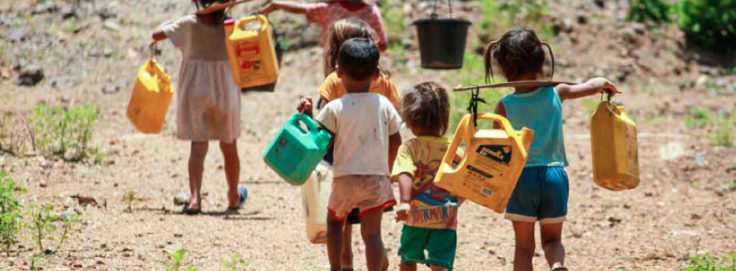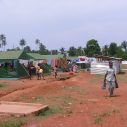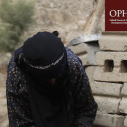
Search
Child Poverty: How to Measure and For What Policy Purpose?

There is now a consensus that addressing child poverty is important to breaking long-term social and economic drivers of poverty, and to reflecting the human rights agenda. Indeed, the commitment is enshrined in the Sustainable Development Goals (SDGs). This consensus is recent and not universal. Only three years ago I was discussing the issue with governmental officials who said, ‘children can’t be poor because they don’t work’. So, it is important not to be complacent and to work on improving evidential and advocacy-based approaches, as discussed later in this Dimensions issue.
Direct and Indirect Measures
It is important to measure poverty with an underlying policy agenda. Measurement should enable us to track how many children are poor, the depth and severity of their poverty and how these change over time. All poverty measures must have a basic ability to do that. Changes over time will reflect both the direct influence of policy on children (improving their access to quality education, for instance) and the indirect influence of changes in aggregate household welfare on children. Child poverty reflects both these: for example, improving women’s economic position will normally increase overall household incomes as well as the expenditures on child-related welfare. Child poverty is thus based on seeing children as particular and different in their needs but also appreciating that they are strongly affected by overall household material wellbeing. This means that measurement has to capture these different but linked aspects of child poverty.
Measurement should be for the purpose of child poverty reduction and part of an overall poverty reduction strategy. It should be able to do two things: first, attribute child poverty reduction to overall poverty reduction and, second, capture child specific poverty reduction that is additional to overall poverty reduction.
Fitting Into and Across Poverty Measures
How do these two approaches to child poverty fit across the two ways of measuring poverty: monetary and multidimensional approaches?
Before we tackle the detail, it is important to recognise that fitting to existing definitions of poverty is not always straightforward. Some argue for much wider interpretations of rights and needs to encompass other social, psychological and spiritual domains of well-being. This is fine for expanding conceptual approaches to well-being but, for poverty reduction, it is probably best to align approaches to a concept of material well-being in the first instance. In any case, the availability of data from existing surveys will narrow the focus to what is currently identifiable and measurable. But there can still be decisions to be made between well-being and material deprivation: for example, data on breast-feeding represents a dilemma as it rarely reflects material constraints – both rich and poor mothers do not exclusively breastfeed for different reasons. If a child poverty measure is based on the incidence of breastfeeding, it will put a lot of ‘noise’ into a poverty measure that tries to track material well-being.
Monetary Child Poverty
The simplest way to measure child poverty in monetary approaches is through disaggregation of total poverty incidence by age. This approach is in long standing use by OECD countries and has been associated with clear policies to address child poverty through taxation, social protection and service provision. However, it is important that it is able to identify poverty in terms of the total population who live in poor households. I say this because there are still governments who solely count households in their national monetary poverty measures and thus cannot disaggregate by age.
The age-groups to use for poverty reporting depend on the audience and/or purpose. Responding to the Convention of Rights of a Child (CRC), the SDGs and other internationally mediated measures report on the children aged 0–17. But many other international approaches use the 0-14 definition of a child in order to align with employment profiles. Policy makers should focus on age-groups that match and reflect existing policy design: school age, nutrition programming, healthcare, early education and childcare programmes. Knowing the extent and depth of child poverty can then feed into designing school feeding programmes, fee waivers and other policy areas.
Measurement should be for the purpose of child poverty reduction and part of an overall poverty reduction strategy.
It is possible to look within households at children, using monetary poverty measures, if their poverty status is used to look at their individual circumstances: are they in school, do they have poor nutrition or health, for instance. Indeed, it is possible to look at multiple children within poor households to see if all children in the household experience these deprivations. Looking within households at children is also possible using household level multidimensional poverty measures. However, calculating monetary poverty at the child level is rarely possible because children’s consumption is not captured separately in most surveys very easily. It is nonetheless possible to model household expenditures using a regression approach based on items of spending that are specific to children (such as clothing) to build a ‘within household’ measure of child monetary poverty. These calculations have raised the poverty headcount for children in Malawi and Cote d’Ivoire. However, distinguishing child poverty by age or gender would rely on detailed expenditure breakdown and attribution, which is not usually possible with normal household expenditure surveys.
Multidimensional Poverty
Child poverty in the developing world was first considered comprehensively through multidimensional measurement in 2003. This early approach to multidimensional poverty measurement has been methodologically overtaken by the Alkire-Foster indices but remains in place in Latin America and has subsequently contributed to MODA, which is discussed later in this edition of Dimensions in the article ‘MPI and MODA: Disentangling the Differences Between a Policy Tool and Advocacy Instrument’. This legacy is hugely influential and can confuse both statisticians and policy makers as there are similarities in approach and terminology that belie very substantial differences in robustness of estimation and their potential for application in policy making.
Setting aside the legacy, we see measurement approaches that replicate the distinction between ‘disaggregation’ of children in household measures and a separate identification of ‘child level’ poverty that we discussed earlier for monetary poverty.
Many countries have introduced national MPIs or similar measures (as in Mexico’s case presented later in this issue) to calculate national multidimensional poverty. Often included in these measures are indicators on school attendance, child nutrition or health that actually make poverty measures for the whole population fairly child sensitive. But they are computed at the household level and many of the indicators are also household level, such as the quality of the dwelling construction and access to utilities (electricity, water and sanitation). When we disaggregate the population living in multidimensional poverty we see over-representation of children, as usually occurs in household monetary poverty measures, which is confirmed in the updated global picture of child multidimensional poverty presented in the next article of this magazine.
Many countries have also put in place individual level child poverty measures. This is far more doable than the analogous monetary approach as data exists on deprivations that are identified for each child. But age-related issues matter far more fundamentally. There are different indicators that are specific to the age of the child (the so-called lifecycle approach) but it means that many children do not have the risk of specific deprivation (a child cannot be deprived of attending school if they are not old enough to go to school, for instance). If these indicators are taken separately then different indices have to be computed for different age-groups, which results in multiple indices that are different from each other as well as different from the national MPI index measure –a situation that is difficult both to report and build into a coherent poverty reduction policy.
One solution is to look across indicators and age-groups to compute indices that examines aggregates of deprivation specific to the child population. Also, there are many household level indicators in child level multidimensional poverty indices (for example, the quality of dwelling construction, access to utilities and information). This means that information on national MPIs is duplicated in child level indices but is treated differently and can be reconciled with the national index easily. The discussion in the article ‘Building a Child Poverty Measurement to Inform Policy’ in this Dimensions issue outlines how to separately identify and specify child level indicators and add them to the national index to produce a new ‘child poverty version’ using an expanded set of data solely on children. This approach reconciles the ‘age-specific’ and ‘household level’ data problems of a child level index. If done, this allows the resulting child level index to both replicate the national index and to be additional to report child poverty separately. This approach can consider direct and indirect child poverty issues together in consistent ways. It is not perfect, but probably less imperfect than multiple and inconsistent indices.
Ways Forward
What is the question for the multidimensional poverty measurement community? Is it about the right approach to multidimensional child poverty measurement, or what works best within a suite of measures to allow child poverty to be identified in both direct and indirect terms? The aim surely should be to triangulate child poverty across monetary and multidimensional measures in a way that helps policy makers specify how to respond and prevent it. This is a more applied agenda than simply having a measure in place that allows a tick in a box in a list of SDG statistical reporting requirements. There is no valid argument about one approach fulfilling a rights-based approach and another not: both can and do. But a different emphasis on, or interpretation of, the obligations from child rights could help: an applied empirical interpretation of Article 2 of the CRC ‘to act in the best interests of the child’ may point to a more pragmatic and applied approach that also results in a more robust and consistent calculation of child level multidimensional poverty – one that fits across different populations and approaches and allows policy makers to more clearly specify and evaluate child poverty reduction programmes. The examples from Mexico and reflections from Panama later in this Dimensions issue both clearly show that such an approach is possible, doable and has real benefits for policy.
This article was published in Dimensions 7.
















